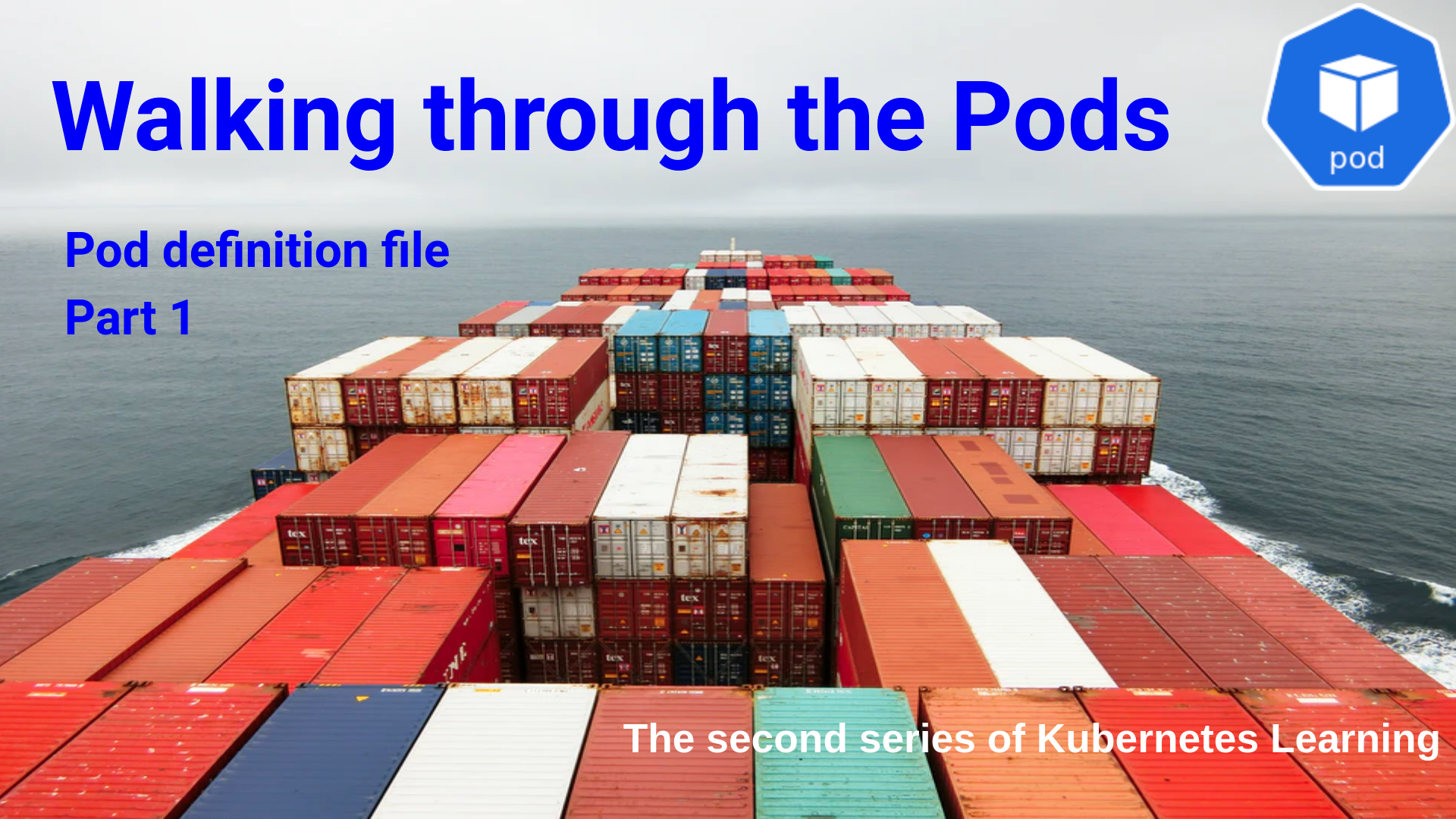Kubernetes pods vs containers
Pod, container, docker is the most common interchanged word in the Kubernetes world. So before going to the technical definition, we will clearly define what it is.
Logically a container is packed inside a pod in a Kubernetes cluster. A pod is a covering of one or more containers. A pod can have multiple containers running on it on a Kubernetes cluster.
Another common misunderstanding about the docker. What is docker? For better clarity, I am adding two words after docker.
- Docker image.
- Docker container.
The issue begins from our understanding of docker. Some of us consider the docker image and docker container are the same. Some of us don’t know where to draw the line between them. And even some of us think the docker and Pod are the same. Don’t worry, I had all this confusion at the beginning. We will clarify it.
So let us start from the base. The flow looks like this.
Docker image -> Docker container -> Pods
Docker image
Docker images are read-only templates. If you are familiar with the Vmware template, you can relate it to the docker image. It is a mini OS template. Basically, a docker image is a file. It doesn’t need any computing power ( CPU or memory ). Docker images are available/kept in,
- Docker hub.
- Google container registry.
- Almost all the cloud providers option to create a docker registry.
- You can keep it in your private registry.
- Or directly in your system.
You can decide this based on where you are hosting the Kubernetes cluster, based on the compliance policy of your organisation, complexity of your environment etc…
Docker containers
Docker containers are runnable instances of a docker image. It requires CPU, memory and other computing resources to run.
It is a mini VM. Since it called a microservice may be, we can call it a micro virtual machine :).
Pods
In simple words, a pod is a box that contains one or more containers. Pod share the filesystem. Even if you have multiple containers, it has only a single IP address for external communication. The communication within the pods between the containers happens through the localhost. Pods are the smallest deployable units of computing that we can create and manage in Kubernetes.
Pod definition file
Kubernetes definition file contain four top-level fields.
apiVersion:
kind:
metadata:
Spec:
How do we get this information? 🤔
Execute the command, kubectl explain pod you will get the details.
rajith@k8s-master:~$ kubectl explain pod
KIND: Pod
VERSION: v1
DESCRIPTION:
Pod is a collection of containers that can run on a host. This resource is
created by clients and scheduled onto hosts.
FIELDS:
apiVersion <string>
APIVersion defines the versioned schema of this representation of an
object. Servers should convert recognized schemas to the latest internal
value, and may reject unrecognized values. More info:
https://git.k8s.io/community/contributors/devel/sig-architecture/api-conventions.md#resources
kind <string>
Kind is a string value representing the REST resource this object
represents. Servers may infer this from the endpoint the client submits
requests to. Cannot be updated. In CamelCase. More info:
https://git.k8s.io/community/contributors/devel/sig-architecture/api-conventions.md#types-kinds
metadata <Object>
Standard object's metadata. More info:
https://git.k8s.io/community/contributors/devel/sig-architecture/api-conventions.md#metadata
spec <Object>
Specification of the desired behavior of the pod. More info:
https://git.k8s.io/community/contributors/devel/sig-architecture/api-conventions.md#spec-and-status
status <Object>
Most recently observed status of the pod. This data may not be up to date.
Populated by the system. Read-only. More info:
https://git.k8s.io/community/contributors/devel/sig-architecture/api-conventions.md#spec-and-status
rajith@k8s-master:~$
From the above command, we got ,
KIND: Pod
VERSION: v1
apiVersion: v1
kind: Pod
What about the other field metadata and spec? It is specified there but, it is not clear.
metadata We will follow the link given in the command output. 🏃🏼
The detailed explanation is available under the given link. But do we need all of those? No, we will take only the required fields from it.
- Name:- A string that uniquely identifies this object within the current namespace.
- Namespace:- It is to isolate the objects in a Kubernetes environment. We will talk about the namespace more in another series.
- Labels:- A map of string keys and values that can be used to organize and categorize objects. It is to identify the ‘object’ in the different categories. For example, web servers can be labelled with “type: web”, the production servers can be labelled with “env: prod”.
apiVersion: v1
kind: Pod
metadata:
name: my-first-pod
labels:
type : web
env : prod
spec Now we came to the important part of the definition file ‘spec’.
It is the specification of the container inside the pod. We need to specify the name of the container, the image used to create the container. And if need additional parameters like command, arguments and a few more parameters can be added here. If you have multiple containers within the pod, then each container specification should be mentioned here.
Spec:
# The container specification section starts here
containers:
- name: my-first-pod
image: nginx
# The container specification section ends here
We will form a pod definition by combining all the above details and create a pod definition file.
apiVersion: v1
kind: Pod
metadata:
name: my-first-pod
labels:
type : web
env : prod
spec:
# The container specification section starts here
containers:
- name: my-first-pod
image: nginx
# The container specification section ends here
